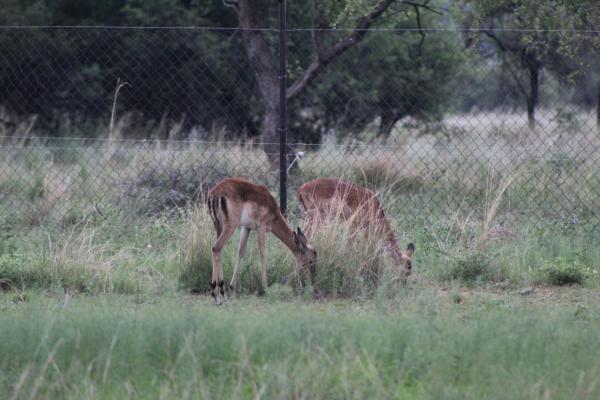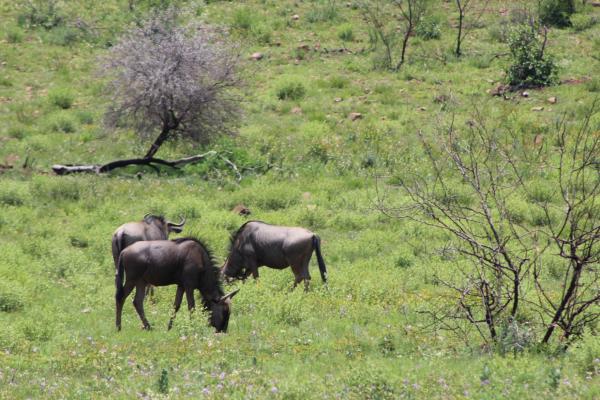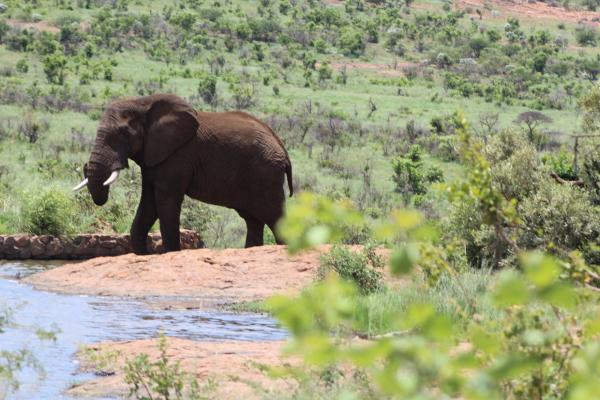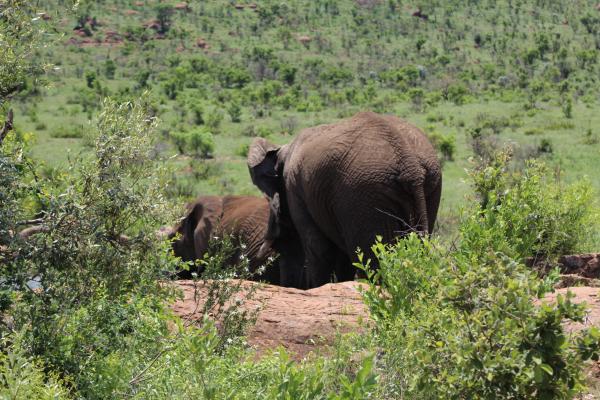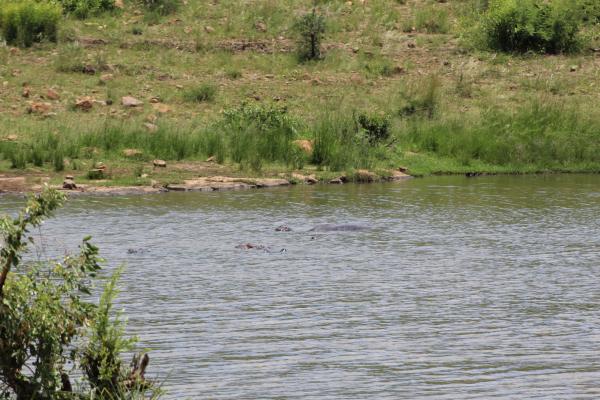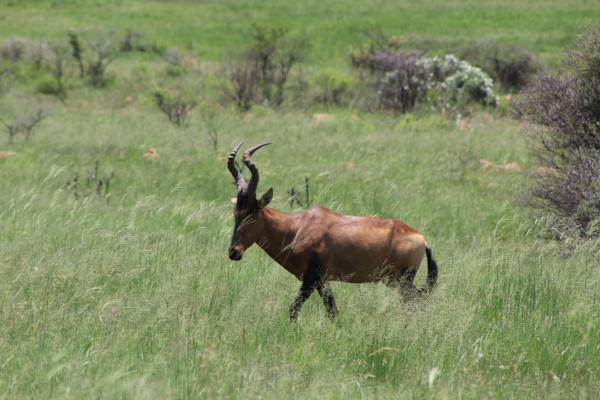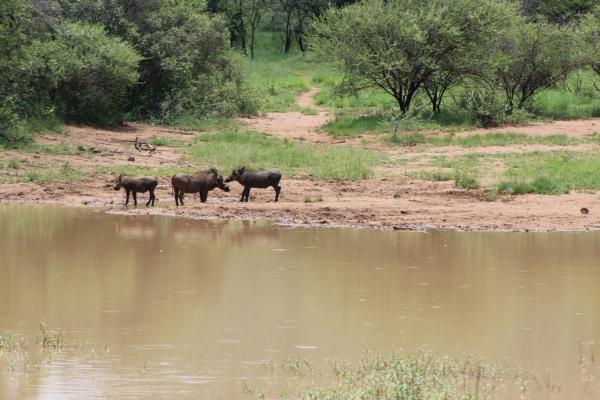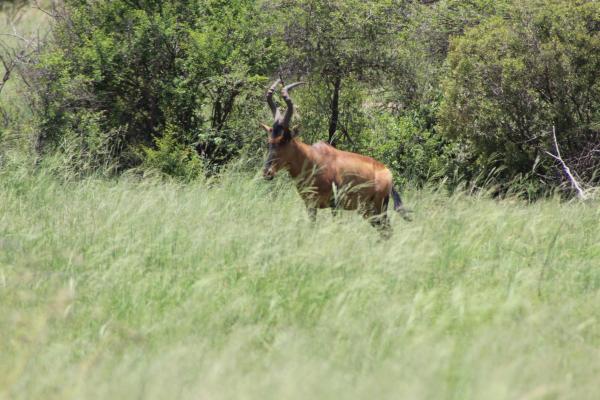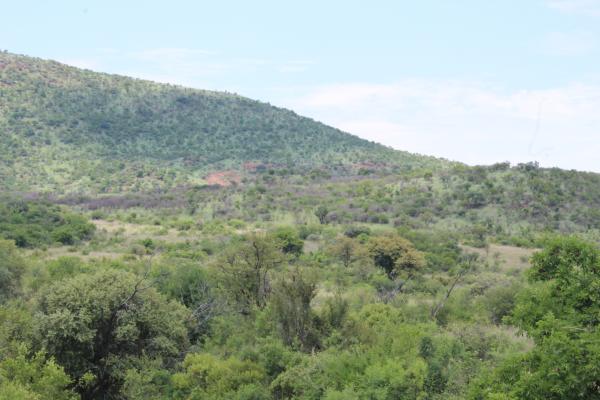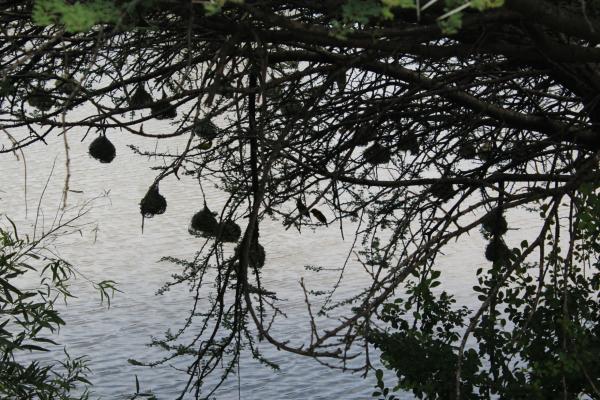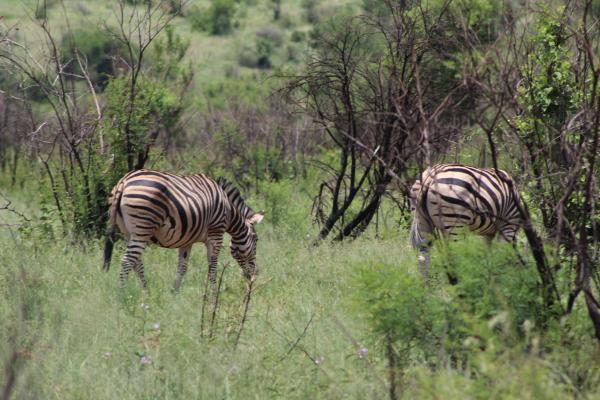

The Pilanesberg is known as an area in the North West Province of South Africa, made popular thanks to the Pilanesberg Game Reserve and the Sun City Resort entertainment complex.
The original name refers to a mountain, an ancient volcanic structure circular in shape, that was named after the Tswana chief Pilane ("berg" is Afrikaans for mountain). The mountain or Pilanesberg National Park Alkaline Ring Complex is a vast circular crater of a very ancient extinct volcano that last erupted some 1,200 million years ago.
The Pilanesberg is located 120 km to the north west of Pretoria and about 170km from Johannesburg.
Pilanesberg Game Reserve offers a variety of is a sanctuary for a variety of Wildlife
including the Big Five - rhino, lion, elephant, leopard and buffalo.
Situated inside the eroded crater of an extinct volcano in the North
West province (adjacent to Sun City,) it has a history that covers many centuries.
Pilanesberg is one of the largest volcanic and Alkaline Ring Complexes of its kind in the world. Its rare rock types and structure make it a unique geological feature.
The early presence of man can be seen in the numerous Stone and Iron Age sites that are scattered throughout the park.
The
Game Reserve exists within the transition zone between the
dry Kalahari and wetter Lowveld vegetation, commonly referred to as
"Bushveld". Unlike any other large park, unique overlaps of mammals,
birds and vegetation occur because of this transition zone.
The
colorful hues, varied habitats and panoramas will delight and entertain
photographers and visitors. Off the centre of the park is Thabayadiotso,
"the Proud Mountain" and the beauty of Pilanesberg is reflected in a
large central lake, the Mankwe Dam.
The game reserve is served by luxury lodges and 2 resorts:
As a result of the Pilanesberg being on a transition zone there are overlaps in wildlife (mammals & birds) and vegetation and the Reserve accommodates almost every large mammal of southern Africa.
The Game Reserve is
fringed by three concentric ridges or rings of hills; an extinct
volcano that forms the "Pilanesberg National Park Alkaline Ring
Complex".
These hills, created by ages of erosion, and stands
high above the surrounding bushveld plains. Over time, wind and water
have carved a spectacular landscape with rocky outcrops, open
grasslands, wooded valleys and thickets.
The park exists within
the transition zone between the dry Kalahari and wetter Lowveld
vegetation, commonly referred to as "Bushveld". Unlike any other large
park in South Africa, unique overlaps of mammals, birds and vegetation
occur because of this transition zone.
Springbok, brown hyena,
the red eyed bulbul, and camel thorn trees usually found in arid areas
are found cohabitation with moist-area-limited impala, black eyed bulbul
and Cape chestnut trees. You find syenite koppies, thickly forested
ravines, typical bushveld and also rolling grasslands and lightly wooded
areas.
The park has a rich array of wildlife including the Big
Five and most of the animal species of southern Africa including lions,
elephants, black & white rhinoceros, African buffaloes, leopards,
zebras, hyenas, giraffes, hippos and crocodiles, can be found.
The
Pilanesberg is not in a location which the Big Five animals would
naturally inhabit, however they have been brought into the 550 square
kilometres of African bushland.
Over 360 bird species were
counted. Though some are migrants, most others are permanent
inhabitants. There is a self-guided trail in the Walking Area at the Manyane Resort Complex in the east, which offers environmental education whilst game viewing and bird watching on foot.
Also at Manyane Resort there is a walk-in aviary with over 80 species of indigenous birds.
The Alkaline Ring Complex
is one of the largest volcanic complexes of its type in the world and
the rare rock types and formations make it a fairly unique geological
feature.
It is geographically located within the Witwatersrand
range comprising a vast circular crater of a very ancient extinct
volcano that last erupted some 1,200 million years ago.
This
extinct volcano is the most perfect example of an alkaline ring complex
and one of the largest volcanic complexes of its type.
Through
time, this huge volcano weathered into concentric rings which, today,
rise up to 700 meters above the plains - a mere tenth of the original
volcano height. The rocks that now form the hills are the remains of the
magma pipes which once fed the volcano from deep below its summit.
A number of rare minerals occur in the park; although not necessarily economically important.
Pilanesberg has survived ages of erosion and stands high above the surrounding bushveld plains.
With a history stretching over many centuries, the early presence of man can be seen in the numerous Stone and Iron Age sites that are scattered throughout the Pilanesberg National Park.
Pilanesberg, located in North West Province in South Africa west of Pretoria, is named after a Tswana chief, Pilane. The Pilanesberg Game Reserve borders with the entertainment complex Sun City Resort.
The
northern region of the Pilanesberg Game Reserve was traditionally owned
by the Bakgatla-ba-Kgafela (commonly known as the Bakgatla) tribe. A
mission station was established in this section of the park.
The
southern section of the Pilanesberg game reserve was originally a set of
farms which were sold to and registered in the names of a number of
Boer farmers by the Transvaal government in the 1860s. These farmers
were responsible for building the Mankwe dam - which is the
Pilanesberg's largest standing water reservoir.
Under Apartheid
policies the Boer farms were bought by the Government during the 1960's
and the Bakubung tribe from nearby Ventersdorp settled on the land. The
land was then subsequently delivered to Bophuthatswana, a large
bantustan or "homeland" established under the Apartheid Government.
Bophuthatswana
decided to re-introduce wildlife and convert the Pilanesberg into a
game reserve. The Bakgatla tribe, under Chief Tsidimane Pilane, agreed
to the inclusion of the mountainous region of their property within the
Pilanesberg reserve. The 60 families were re-settled under an agreement
with the tribal authority. They were moved to a newly planned town to
the east of the Pilanesberg Game Reserve.
Around the same time,
Sun International obtained a ninety-nine-year leasehold over an adjacent
farm and built the Sun City complex.
Operation Genesis, which
involved the reintroduction of long-vanished species after completion of
approximately 100 km of fencing around the reserve's perimeter, started
during the 1970's.
The creation of the Pilanesberg Reserve
is considered one of the most ambitious programmes of its kind to be
undertaken anywhere in the world. Operation Genesis is still the largest
game translocation undertaken in the world, and as a result the park
now has in excess of 10,000 animals.
Pilanesberg Wildlife Trust
North West Tourism
Wikipedia
Geological Sciences at San Diego State University
